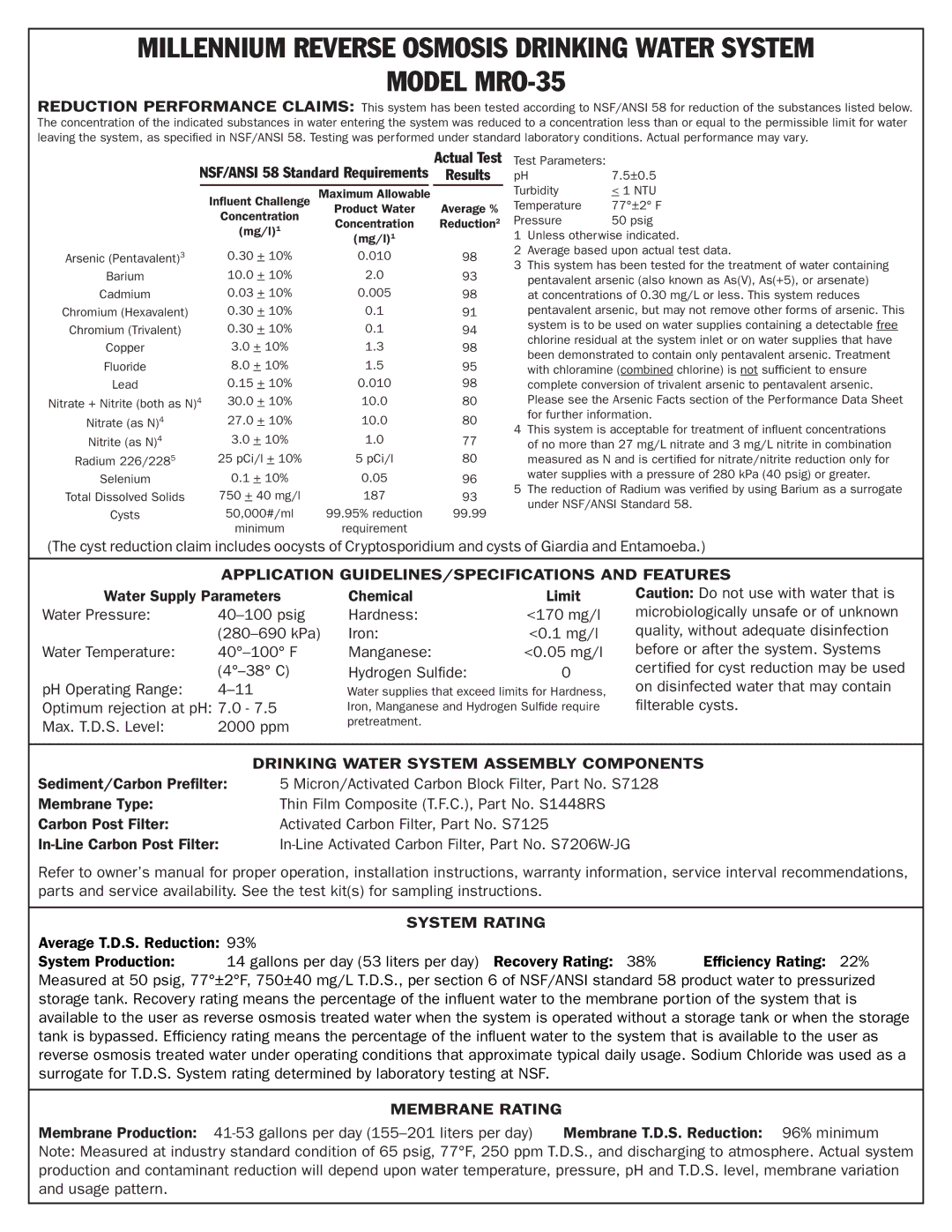MRO-35 specifications
Millennium Enterprises has gained significant attention with its recent release, the MRO-35, a sophisticated piece of technology designed to meet the needs of various industries. This multi-role unmanned aerial vehicle (UAV) has been engineered with advanced features and technologies that enhance operational efficiency and versatility.One of the standout characteristics of the MRO-35 is its impressive flight endurance. Powered by a state-of-the-art battery system, the MRO-35 can stay aloft for up to 10 hours, allowing for extended surveillance, reconnaissance, and data collection missions. This capability makes it an ideal choice for sectors such as agriculture, environmental monitoring, and logistics.
The MRO-35 is equipped with an array of high-resolution cameras and sensors, including electro-optical and infrared imaging systems. These technologies enable real-time imaging and thermal analysis, providing users with critical intelligence and situational awareness. The versatile sensor suite also includes multispectral capabilities, facilitating precision agriculture and support for search and rescue operations.
Another key feature of the MRO-35 is its modular design. This allows users to customize the UAV with various payload options, making it adaptable to specific mission requirements. Whether shortening flight time, expanding sensor capabilities, or enhancing communication functions, the modular approach ensures the MRO-35 can evolve with changing operational demands.
Furthermore, the MRO-35 supports advanced autonomous flight capabilities. This includes waypoint navigation and obstacle avoidance, which significantly reduces the need for constant pilot intervention. The drone can be pre-programmed to follow specific routes, making it efficient for repetitive tasks like aerial mapping and surveying.
Connectivity is another strength of the MRO-35, featuring secure communication links that enable real-time data transmission to ground control. The UAV can operate in challenging environments while maintaining a robust connection, ensuring that decision-makers receive crucial updates without delay.
In summary, the Millennium Enterprises MRO-35 represents a significant advancement in drone technology. Its blend of endurance, customizable payloads, advanced imaging systems, and autonomous capabilities positions it as a leading solution for a broad range of applications. Whether in defense, commercial sectors, or environmental monitoring, the MRO-35 stands out as a reliable and efficient tool for modern challenges.

